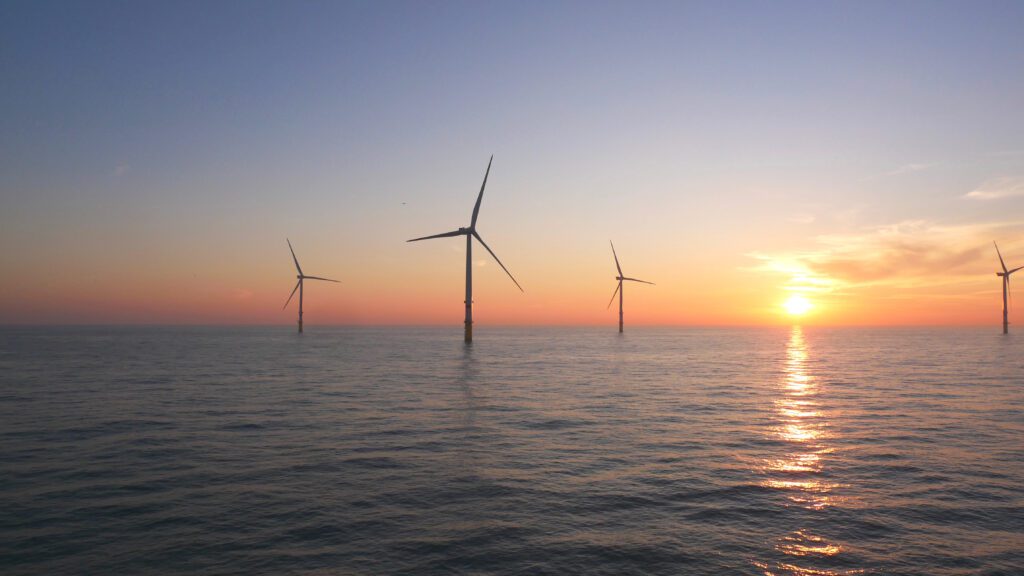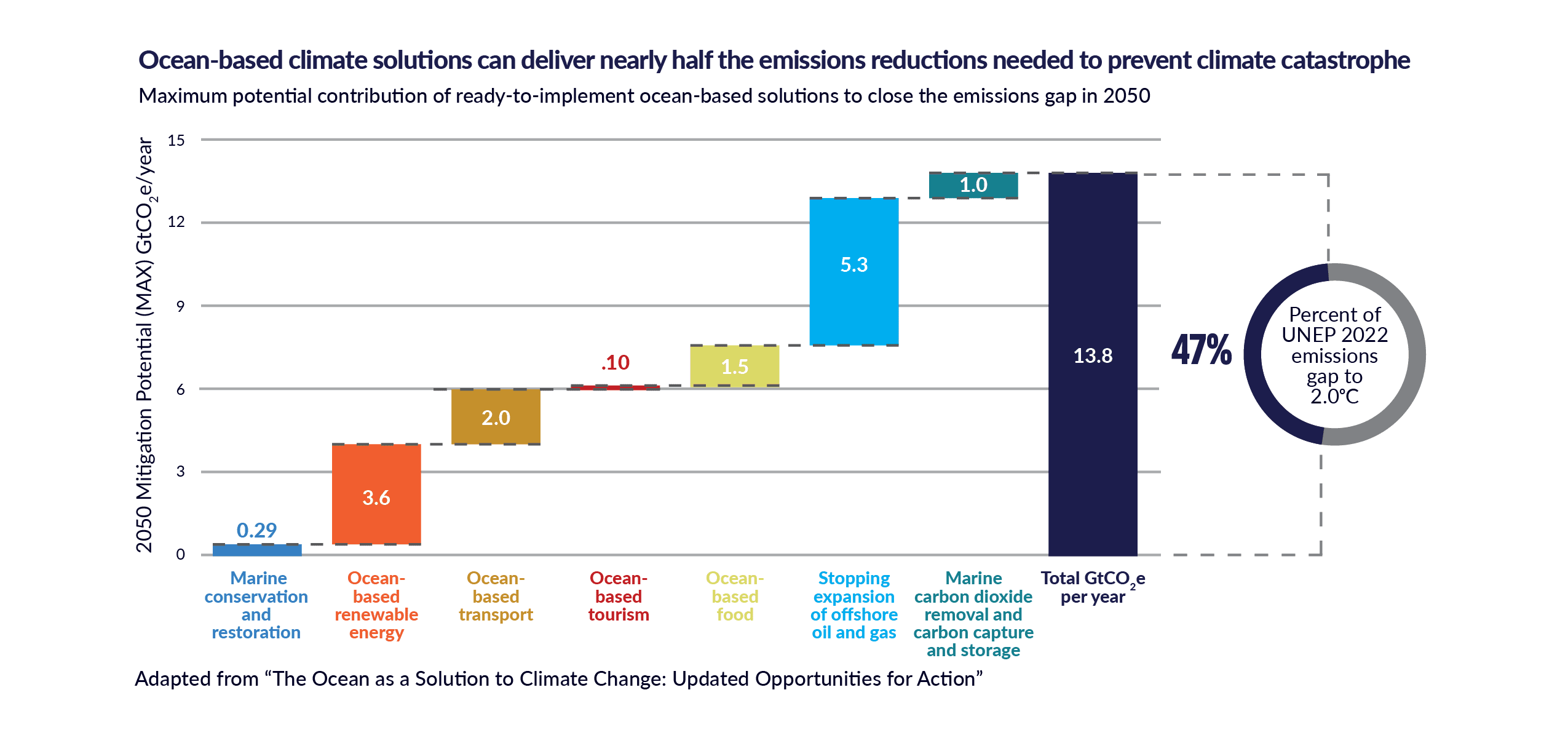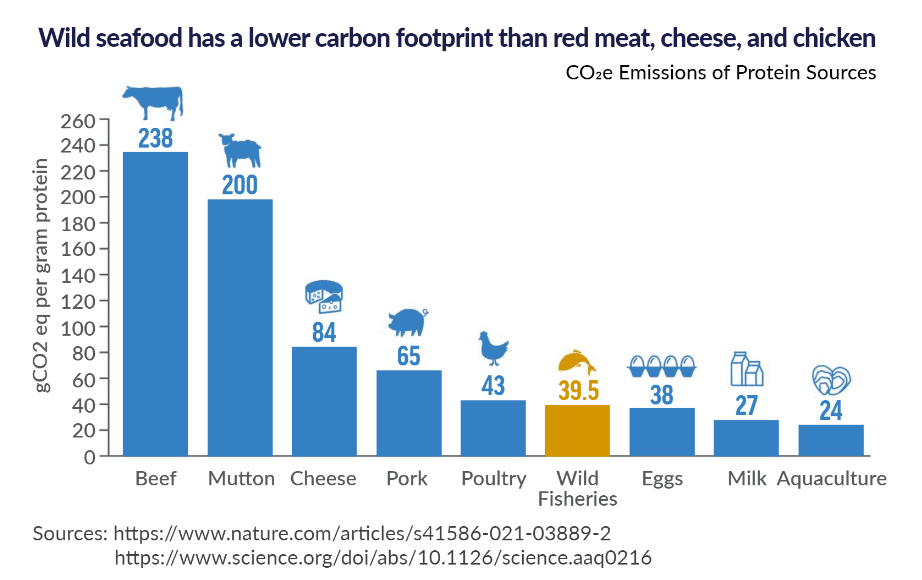December 13, 2023
A sea of climate solutions
BY: Emily Nuñez
Global ocean surface temperatures hit record highs in 2023. Human-caused climate change is currently compounding El Niño, a natural weather pattern, to deal extra damage. Forecasts show that unmitigated warming could melt nearly all of the Arctic sea ice and harm half of the world’s coral reefs as soon as the 2030s.
The oceans are not just victims of a warming climate, but key mitigators — they have already spared humans the worst consequences of climate change, absorbing over 90% of all the excess heat trapped on Earth. Had the same energy instead gone into the atmosphere, temperatures would have already soared by almost 36°C (97°F). In turn, the oceans have become less hospitable to life.
Subjected to hotter waters, corals and many other marine species struggle to adapt. Warmer waters hold less oxygen, which can stunt the growth of fish or force them to flee to cooler regions, if they can. The effects on marine life are still not fully understood, with one 2023 study suggesting that ocean warming could even cause memory loss in damselfish, hurting their chances of survival.

While the oceans bear the brunt of climate change, recent research reveals that they also hold important solutions. Ocean-based initiatives could cut global emissions enough to get the world nearly halfway to preventing a 2°C rise in temperatures by 2050, according to a September 2023 report commissioned by the High Level Panel for a Sustainable Ocean Economy (Ocean Panel). To keep warming under 1.5°C — a limit many scientists say is essential to prevent the breakdown of ecosystems — these solutions could close the “emissions gap” up to 35%.
Oceana contributed to this latest literature, designed to guide and galvanize policymakers. The report presents seven ocean-based solutions to curb climate change, including three that are central to Oceana’s campaigns: reducing offshore drilling, restoring and conserving important marine ecosystems, and tapping carbon-smart seafood. The research is clear: ocean-based initiatives hold enormous potential to cut emissions, protect livelihoods, and feed the world.
‘Beyond expectations’
Supported by the United Nations Secretary-General’s Special Envoy for the Ocean and co-chaired by Norway and Palau, the Ocean Panel consists of 18 world leaders of countries that account for half of the world’s coastline and 26% of its fisheries. The first report commissioned by the Ocean Panel in 2019 outlined five climate solutions, bringing global attention to the oceans’ enormous — yet overlooked — emission-reducing potential.
The new report expanded that list and added a solution that could be the most impactful yet: stopping the expansion of offshore oil and gas drilling and gradually phasing down production of existing wells as clean energy alternatives become more widely available and demand for fossil fuels declines.
This section of the report, primarily authored by experts from Oceana, explains that offshore oil and gas production is a significant source of emissions from start to finish.
“Drilling generates [greenhouse gas] emissions throughout the entire process, starting with exploration and extraction of oil and gas from below the seafloor; through onshore emissions during energy-intensive processing and transportation; and finally, and most significantly, when the fuels are burned,” the report states.
While the risks were known, they were never quantified until Oceana published its own analysis on the subject last year, titled “Beyond Expectations: Ocean Solutions to Prevent Climate Catastrophe.”
The title references the authors’ surprise at learning just how much reductions to offshore drilling could limit global warming.
“We knew that the oil and gas piece was going to be big, but even we had not realized how big. No one had done that analysis before,” says Tess Geers, Oceana’s Research Director for Science and Strategy and a co-author of the report. “The fact that it was the biggest of all the solutions was beyond what we were expecting.”
After seeing this research, the Ocean Panel Secretariat, hosted within the Ocean Program at World Resources Institute, asked Oceana to contribute its knowledge and data on the benefits of curbing offshore drilling. Using updated data from the International Energy Agency (IEA), Oceana determined that reducing offshore drilling can provide up to 18% of the emissions reductions needed to stay under a 2°C rise (or up to 14% of the reductions needed to keep warming under 1.5°C).

Eliza Northrop, an international environmental lawyer and one of the 2023 ocean-climate solutions report lead authors, says these findings show that reducing offshore drilling must be “part of the solution” to climate change.
“The analysis undertaken by Oceana demonstrates the significance in terms of emission reduction potential if we transition from offshore oil and gas to renewable energy,” says Northrop, who is also the director of the Sustainable Development Reform Hub at the University of New South Wales in Australia.
While nearly 30% of oil and gas production comes from offshore sources, most of that activity occurs in just a few concentrated areas. Geers notes that stopping the expansion of offshore drilling — a key campaign goal of Oceana’s in the U.S., U.K., and Belize — would not cut off current sources of fuel. This solution is not only minimally disruptive, but also relatively quick and simple to implement because it does not require the development of new or costly technologies.
“One of the things Oceana highlights in its analysis is that there are no technological requirements for this solution,” Geers says. “It’s a matter of political will and changing business practices.”
Stopping the expansion of offshore oil and gas drilling will also help reduce the risk of massive oil spills, like those Oceana has responded to in the Philippines, Peru, and the Gulf of Mexico, to name a few, which wreak havoc on marine ecosystems and coastal communities.
Oceana is calling on President Biden to end new leasing for offshore drilling in the United States while also urging political parties in the United Kingdom to commit to halting new offshore oil and gas development. Policies like these would move the needle closer to the emissions reductions needed to stop climate change in its tracks.
Consume and conserve
The report recommends a “critical” climate change solution that aligns with Oceana’s goal to “Save the Oceans, Feed the World,” according to Geers. The report calls for a focus on sustainable ocean-based foods, which can simultaneously feed populations and help to decarbonize global food systems that account for up to a third of human-caused emissions.
In 2021, an international group of 18 scientists conducted a comprehensive assessment of aquatic foods and their impact.
When compared with other protein sources, carbon emissions associated with wild seafood are six times lower than that of beef, five times lower than that of mutton, and more than two times lower than that of cheese per kilogram produced.

Although marine fisheries contribute a nominal amount — just 4% — to the carbon footprint of global food systems, policies to make wild fisheries even more climate-friendly can go a long way, particularly in countries that depend on seafood for nutrition or jobs.
Because wild seafood has a lower carbon footprint than many sources of land-based animal protein, restoring depleted fisheries could provide the world with a steady supply of climate-friendly, nutrient-packed protein. Restoring wild fisheries also reduces emissions because less effort and fuel are needed to capture the same number of fish.
The Ocean Panel-commissioned report encourages a “wide-scale shift in global diets” that would favor seafood (as well as vegetarian options) over land-based proteins that are associated with higher emissions, such as beef and lamb. Vessels that switch to less carbon-intensive forms of fishing gear and fuel can also help cut emissions in wild fisheries.
Since the Ocean Panel commissioned its first ocean-climate solutions report in 2019, global interest in another solution has grown: regulating bottom trawling, a fishing method that is both destructive to marine life and to the climate. Bottom trawling involves dragging large, weighted nets across the ocean floor, killing countless marine organisms and disturbing marine sediments that can contain captured carbon. Bottom trawling also uses more fuel than other major fishing methods.
“Bottom trawling is one of most carbon-intensive forms of fishing,” Geers explained. “If you can fish using other types of gear — less carbon-intensive forms of fishing — then that will also reduce the overall emissions of this sector.”
Oceana campaigns to end bottom trawling and preserve key marine habitats around the world, most recently winning a legal battle to uphold an industrial bottom trawling ban in Rio Grande do Sul, an important fishing state in Brazil. The report recommended several policies that can maximize the benefits of marine conservation and restoration, including a focus on habitats that are adept at sequestering carbon, such as mangroves, tidal marshes, and seagrasses.
Known as “blue carbon ecosystems,” these habitats could scrub up to 78 coal-fired power plants’ worth of greenhouse gases from the atmosphere, while also helping to improve water quality, preserve biodiversity, protect coastal communities from storms and erosion, and provide them with food and stable income.
To help prevent greenhouse gases from entering the atmosphere in the first place, the report also recommends scaling up ocean-based renewable energy, particularly offshore wind — a clean energy source that Oceana promotes. According to the report, global investments in this sector will make it “the most important ocean-climate mitigation solution by 2030.”
Combined, these solutions could deliver significant reductions in greenhouse gas emissions, but only if decision-makers start implementing policies now.
No time to wait
The IEA projects that global energy-related CO2 emissions will peak in 2025. While emissions are expected to taper off in the following years, the ocean-climate solutions report warns that emissions will “subside far too slowly to avert most catastrophic impacts of climate change.”
In other words, proactive measures are needed to close the emissions gap and prevent climate disaster. In addition to the three solutions outlined above, the Ocean Panel has encouraged action and policies including decarbonizing ocean-based transport and tourism and further exploring the potential to capture and store CO2 in the seabed.
Considering that few significant steps have been taken since the first ocean-climate solutions report was published in 2019, time is of the essence. “We already know that we’re way behind,” Geers says. “If we wait until 2045, it’s too late. Everything that we can do now — today — is essential.”
Oceana Chief Scientist Dr. Kathryn Matthews and fellow report co-author agrees, citing the imminent need for sensible ocean-based policies that confront climate change head-on.
“The climate crisis is here, affecting all of us, and it’s getting worse,” Matthews says. “As a scientist, it’s hard to stomach inaction, especially when we have some obvious solutions at hand. If world leaders are serious about tackling catastrophic climate change, the ocean is a clear place to start.”



